Common widths of LED strips in life are 8mm, 10mm, and 12mm, which are also the most widely used widths. However, the thinnest LED strip is less than 8mm wide, and the PCB width of single-color narrow LED strips and addressable narrow LED strips is only 3-6mm, thinner than a finger. The width of LED strips can also reach 28mm or even 120mm, with multiple rows of LED strips on flexible circuit boards, thus being called multi-row LED strips.
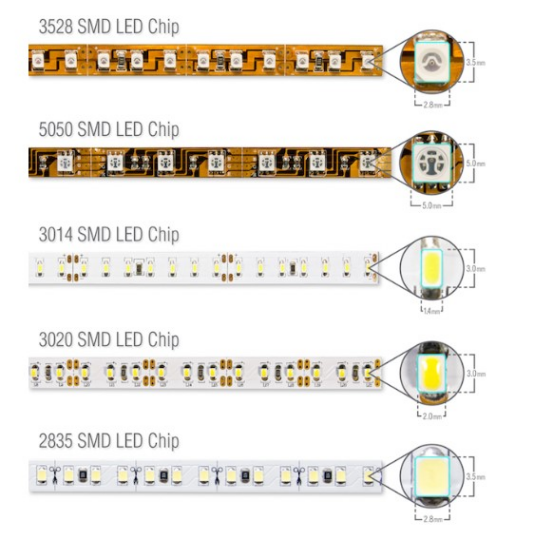
What is the thinnest LED strip? What is it used for?
The thinnest LED strip is the 2.7mm-wide COB LED strip, with colors of 3000K warm white, 4000K neutral white, or 6000K daylight white.
COB stands for chip-on-board technology, with the LED mounted directly on the PCB, allowing for more LEDs to be integrated into a single strip to achieve a seamless light source effect without points.
The color temperature of the LED strip is encased in a specific layer of glue, enabling the entire strip to emit light seamlessly without any additional exposed PCB.
Different sizes of LED strips suit different scenes.
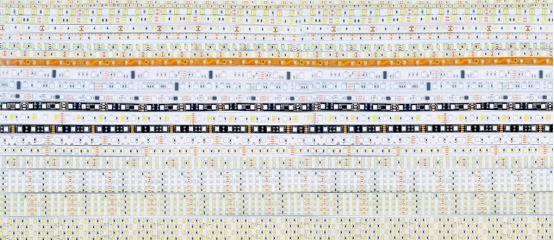
To adapt to various application needs, not all LED strips have the same width. In narrow installation places like inside cabinets, wider LED strips are hard to hide. If you want to add LED lighting in small gaps, narrower LED strips would be more suitable. It can be seen that the width design of LED strips caters to different user needs.
What is the width of 5050 LED strips?
5050 LED strips use 5050 SMD LEDs, with a size of 5mm x 5mm. The width of most 5050 LED strips is 10mm, and there are also 12mm 5050 LED strips. Multiple-row 5050 LED strips also exist; double-row 5050 LED strips have a width of 15mm, triple-row 5050 LED strips are 32mm or 58mm, quintuple-row 5050 LED strips are 58mm, and octuple-row 5050 LED strips are 120mm.
The 5050 LED consumes 0.24 watts. With 60 LEDs per meter, a one-meter 5050 LED strip consumes 14.4 watts, and five meters consume 72 watts. Then, according to the power calculation rules, for a 16.4-foot (SMD 5050) LED strip with 300 LEDs, we need a power supply over 86.4 (72X1.2) watts to drive it.
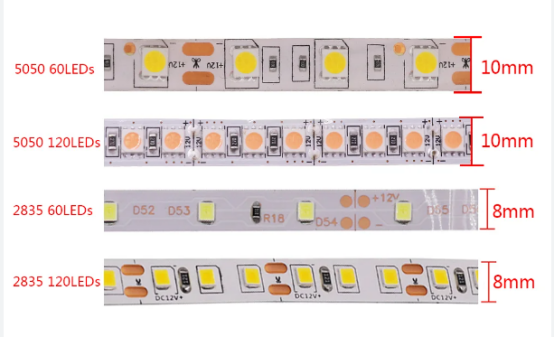
What we need to know is that the more LEDs on the strip, the more energy it consumes, and the greater the power consumption of the LED strip driver, naturally, the higher the cost.
What is the width of 3528 LED strips?
3528 LED strips have different widths, including single-row, double-row, triple-row, quad-row, and quintuple-row. The thinnest 3528 LED strip is a 3.5mm-wide IR strip for medical and thermal applications.
Of them, 5mm and 6mm LED strips are considered narrow and should pay attention to the heat dissipation of the LEDs. You can add aluminum accessories to enhance the heat dissipation performance of the narrow LED strip and avoid damaging the strip due to heat accumulation.
The size of the 3528 SMD LED is 3.5mm x 2.8mm, with each LED consuming 0.08 watts. A one-meter (16.4 feet/5 meters) 3528 LED strip, with 300 LEDs, consumes 24 watts. You need a (24X1.2) 28.8-watt LED power adapter to run the LED strip lighting. From this example, we can know that among the strips with 300 LEDs, the 5050 chip consumes the most energy, the 3528 chip consumes the least, and the 2835 LED is in between.
How wide is the 2835 LED strip?
2835 SMD LED lights come with single row light strips, double row light strips, three rows of light strips, four rows of light strips, and five rows of light strips. The thinnest 2835 led strip is the 3 5 mm wide ir strip suitable for medical and thermal applications.
Among them, the 5 mm and 6 mm light strips are narrower LED light strips, and more attention should be paid to the heating problem of the LED. You can add aluminum profile accessories to the narrow light strip to enhance LED heat dissipation and avoid damage to the light strip due to heat accumulation.
The 2835 smd led measures 2 8 mm x 3 5 mm and consumes 0 2 watts. A 16 5 foot 2835 led strip with 300 leds requires 60 watts and you will need 60 x 1 2 72 w dc power supply to run the strip. From this we can know that on a 300-LED light strip, the 5050 chip consumes the most energy, the 3528 consumes the least energy, and the 2835 LED is somewhere in between.
What is a linear light strip, and what are the dimensions of a linear light strip?
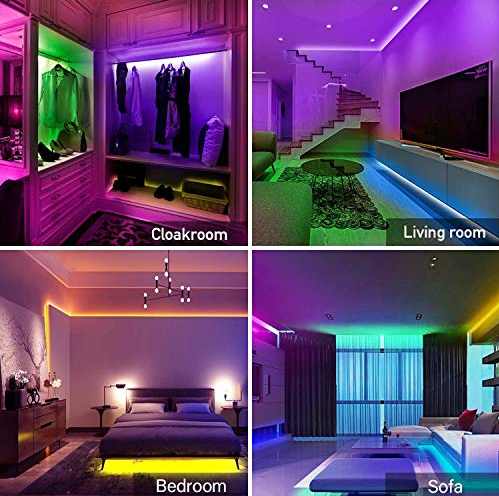
A linear light strip is a strip-shaped lighting device, typically consisting of a series of LED beads evenly mounted on a strip-like material. Linear light strips are widely used in home and commercial spaces for their soft lighting and simple design, providing aesthetically pleasing and practical lighting effects.
The specifications and dimensions of linear light strips include factors such as strip type, number of LEDs, input voltage, power, protection level, control method, and color temperature. Different types of light strips have different dimensions and light effects, such as 5050 and 3535. The number of LEDs is usually calculated per meter, such as 30LEDs/m or 60LEDs/m. The input voltage is typically DC5V-DC24V. Power is calculated based on the number of LEDs and the power of each LED. Protection levels range from IP20, IP65, IP67, to IP68, depending on the application scenario and requirements. Control methods include remote control, controller, and APP. Color temperature options include cool white, warm white, and white light. Choose the appropriate specification and size based on requirements and installation environment.
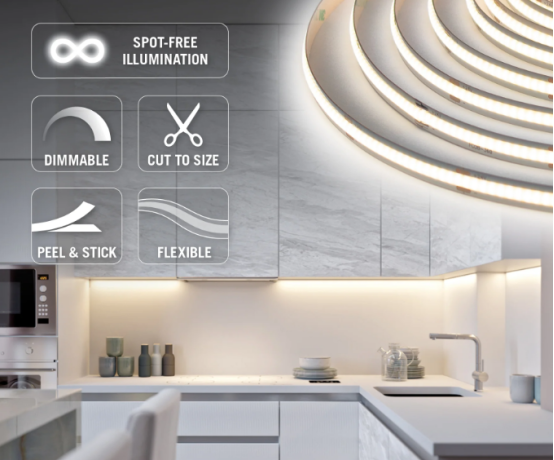
Is the width of the LED strip important?
For spacious installation locations, the width of the LED strip is not crucial. Instead, you need to focus on the density and brightness of the LEDs, as larger spaces usually require more brightness to illuminate details. Only in limited width spaces does the width of the LED strip become essential.
Another thing to consider is that if you want to add silicone LED diffusers or aluminum LED channels to achieve a uniform and soft long-line light, you need to consider whether their inner width matches your PCB width. You cannot fit a 12mm-wide LED strip through a 10mm inner width silicone diffuser or fit it into a 10mm inner width aluminum channel.
I hope this article will give you a deeper understanding of Knowledge about various light strips. I am your editor from TCWIN, guiding you on the road to lighting.
![]() pkgled
LEDSMDBEADS
release time:2023-12-06 10:09:28
Reading volume:1
pkgled
LEDSMDBEADS
release time:2023-12-06 10:09:28
Reading volume:1




